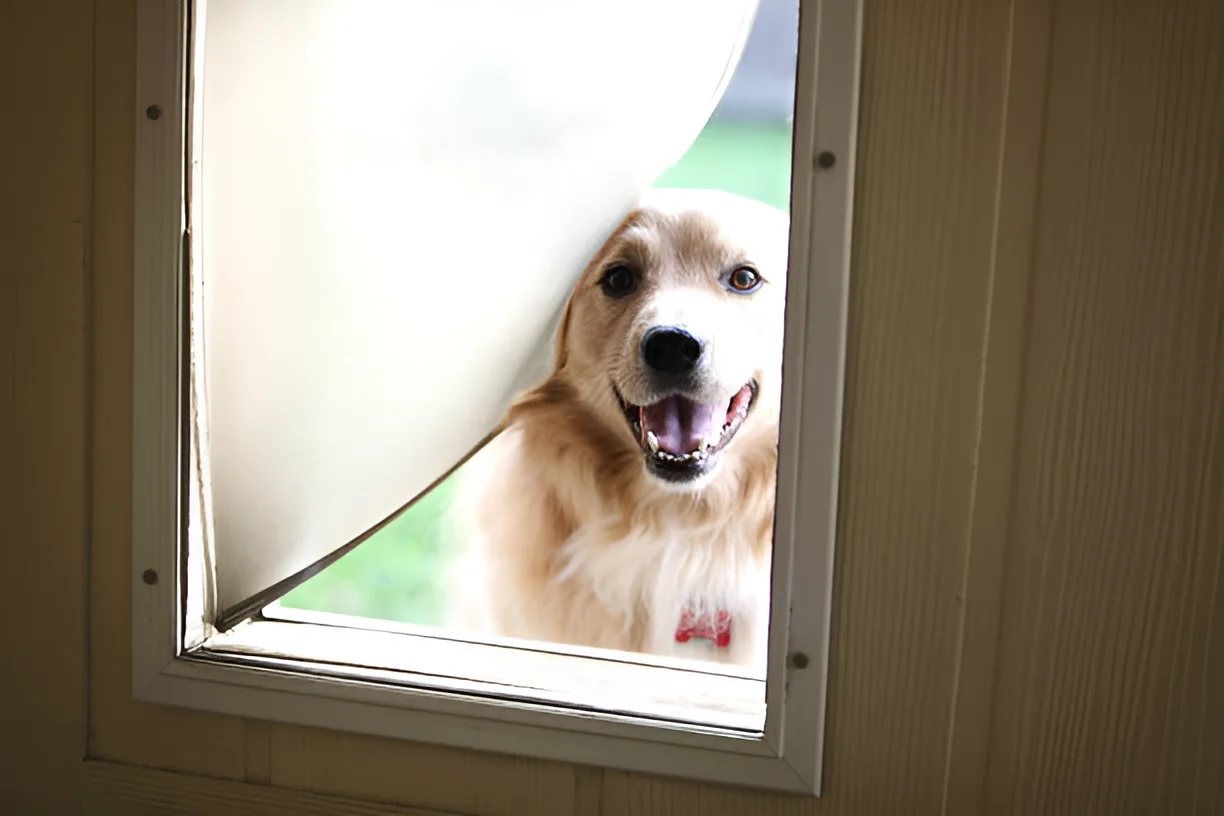Yes, rodents can get in through dog doors, but there are effective measures you can take to prevent this. Dog doors provide a convenient way for pets to go in and out of the house without human assistance. However, they can also serve as entry points for unwanted guests, such as rodents. In this comprehensive guide, we will explore how rodents can enter through dog doors, the risks they pose, and the best strategies to prevent them from gaining access to your home. By understanding these factors and implementing preventive measures, you can ensure that your dog door remains a safe and secure entryway for your pets only.
How Rodents Enter Through Dog Doors
Rodents, including mice and rats, are highly adaptable and resourceful creatures. They can squeeze through small openings and are excellent climbers, making dog doors an easy target for entry. Here are some ways rodents can get in through dog doors:
- Flap Doors: Traditional flap doors are the most vulnerable to rodent entry. The flexible material of the flap does not create a tight seal, allowing rodents to push through easily.
- Climbing Ability: Rodents can climb vertical surfaces to reach the dog door, even if it is positioned higher off the ground.
- Chewing: Rodents have strong teeth and can chew through various materials, including the edges of dog doors, to create larger openings.
Risks Posed by Rodents
Allowing rodents to enter your home through a dog door can lead to several problems, including health risks and property damage. Here are some of the risks posed by rodents:
- Health Hazards: Rodents can carry diseases such as hantavirus, leptospirosis, and salmonella, which can be transmitted to humans and pets.
- Contamination: Rodents can contaminate food and surfaces with their droppings and urine, posing a risk of foodborne illnesses.
- Property Damage: Rodents can chew through wires, insulation, and other materials, causing significant damage to your home.
- Infestations: Once inside, rodents can reproduce quickly, leading to a larger infestation that can be difficult to control.
Preventing Rodent Entry Through Dog Doors
Preventing rodents from entering through dog doors requires a combination of physical barriers, deterrents, and regular maintenance. Here are some effective strategies:
- Upgrade to an Electronic Dog Door: Electronic dog doors are designed to open only when triggered by a sensor on your dog’s collar. This creates a secure barrier that prevents rodents from entering.
- Install Weatherstripping: Apply weatherstripping around the edges of the dog door to create a tight seal. This helps prevent rodents from squeezing through gaps.
- Use Metal Grating: Install a metal grating over the dog door to prevent rodents from chewing through the material. Ensure the grating is securely attached to the door.
- Motion-Activated Deterrents: Place motion-activated deterrents near the dog door. These devices emit high-frequency sounds or bursts of water when they detect movement, deterring rodents from approaching.
- Regular Cleaning and Maintenance: Keep the area around the dog door clean and free of food debris. Regularly inspect the door for signs of damage and repair any gaps or cracks promptly.
Additional Tips for Rodent Prevention
In addition to securing the dog door, there are other steps you can take to prevent rodents from entering your home:
- Seal Entry Points: Inspect your home for other potential entry points, such as gaps around windows, doors, and utility lines. Seal these openings with caulk or steel wool.
- Trim Vegetation: Keep vegetation around your home trimmed and away from the walls. Overgrown plants can provide cover and access points for rodents.
- Store Food Properly: Store pet food and human food in sealed containers to prevent attracting rodents.
- Use Rodent Repellents: Natural repellents, such as peppermint oil, can deter rodents. Apply a few drops around the dog door and other entry points.
- Monitor for Signs of Rodents: Regularly check for signs of rodent activity, such as droppings, chew marks, and nests. Early detection can help prevent a full-blown infestation.
Conclusion
While dog doors provide convenience for pet owners, they can also be an entry point for rodents. By understanding how rodents can enter through dog doors and implementing effective preventive measures, you can keep your home safe and rodent-free. Upgrading to an electronic dog door, using weatherstripping and metal grating, and maintaining a clean environment are all effective strategies to prevent rodent entry. With these precautions in place, you can enjoy the benefits of a dog door without the worry of unwanted guests.
The photo featured below the post headline is Credit: TriggerPhoto/istockphoto
I hope you find this post helpful and informative. If Yes’ feel free to share it with your friends!
Frequently Asked Questions
Can rodents get in through dog doors?
Yes, rodents can get in through dog doors, especially traditional flap doors that do not create a tight seal.
What are the risks of rodents entering through dog doors?
Rodents can carry diseases, contaminate food, cause property damage, and lead to infestations.
How can I prevent rodents from entering through my dog door?
Prevent rodents by upgrading to an electronic dog door, installing weatherstripping and metal grating, using motion-activated deterrents, and maintaining a clean environment.
Are electronic dog doors effective in preventing rodent entry?
Yes, electronic dog doors are effective as they open only when triggered by a sensor on your dog’s collar, creating a secure barrier.
What other steps can I take to prevent rodents from entering my home?
Seal other entry points, trim vegetation, store food properly, use natural repellents, and monitor for signs of rodent activity.









